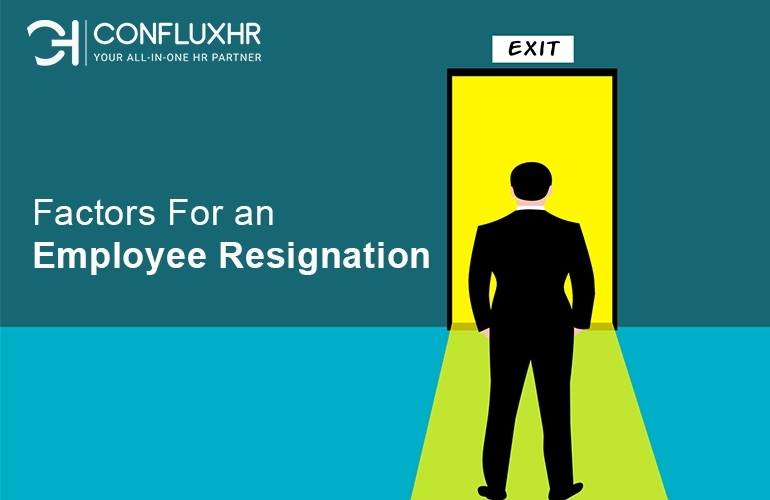Good managers understand how costly staff turnover can be. They work hard to keep their organization’s costs to a minimum. You can only retain some employees, no matter how nicely they are treated. Thus, every organization necessitates a robust leave management system.
On the other hand, some employees are welcome to depart, and maintaining a proper employee exit process may aid in long-term compliance management for an organization. The cost of employee turnover is high.
Apart from the obvious financial costs of replacing them, an employee exit process might have a detrimental influence on the morale of their coworkers. This might wreak even greater havoc on their workers. Given the significant expense of finding, hiring, and training employees, it is critical to prioritize employee retention initiatives.
Do You Need Help Retaining Your Top Employees?
Here are ten frequent reasons why employees leave their employment, as well as tips on reducing employee turnover.
Employees Believe They are Underappreciated and Undervalued
It would be best to inform employees regularly that their contributions are valued. Appreciation does not have to be extravagant rewards or monetary incentives; it can be as essential as verbal praise and pleasant feedback.
Inadequate Communication About Compensation
Fair remuneration is an essential aspect of lowering turnover. However, it is equally crucial to be upfront regarding wage increases and to provide an explanation if one is rejected.
Employees will feel more respected by their company if they are supplied with clear information and transparency regarding salary.
Inadequate Work-life Balance, Vacation Time, and Flexibility
Employees are no longer expected to be linked to their desks from 9 to 5. With many people working remotely during the epidemic and juggling work and home lives, employees are looking for organizations that offer more flexibility regarding work schedules, locations, and hours.
A leave management system is necessary to avoid this discrepancy.
Without Proper Communication, Management Changes and Restructures Will Occur
Businesses that need to plan for and convey organizational changes risk losing essential staff. Coaching employees most affected by the change is part of change management to sustain morale and ensure a smooth transition.
While you may have some of the necessary information, the more you can provide, the better!
Outdated Machinery and Equipment
Outdated or difficult-to-use products may encourage personnel to flee, whether warehousing equipment or computers. Business technology is now critical to how businesses run, from optimizing processes to maintaining communication while working remotely.
Updating workers unhappy with obsolete technology may cost more in the long run than replacing the tools.
Unrealistic Goals and Performance Targets
Setting realistic performance targets is critical for employee morale and your company’s financial goals. These objectives should be reasonable and well-planned. Employee retention will improve if managers recognize and reward their staff when they meet or exceed their goals.
After all, each employee’s achievement contributes to the company’s success.
A Lack of a Clear Path to Advancement in One’s Career
Closely related to performance objectives is giving employees a clear picture of what an internal promotion for their position looks like and what they can do to get there. This is a tried-and-true method of retaining staff while keeping them motivated.
With clear guidance, they may feel safe and seek advancement elsewhere. Companies can reduce turnover by providing a path for employees to advance within the organization.
They Believe Their managers are Unsupportive
People abandon bosses rather than jobs. Bad managers are one of the most significant contributors to employee turnover. If your organization needs help with employee retention, try educating your managers on how to solicit feedback, confess mistakes, and tailor their management style to the person.
The Company’s Branding Is Weak
Employees care more than ever about their company’s ideals and reputation. Company branding is how the general public perceives your firm and what workers can expect if they choose to work for you.
Being active about social issues, supporting working parents in the company, or marketing amenities like a gym membership or free lunches are all examples of branding.
The goal of employer branding is to attract applicants who share these values. That said, it’s critical that these beliefs are genuine, or prospective employees may feel misled and decide to quit.
Employees are not feeling challenged.
A bored employee will likely look for a new, more challenging position elsewhere. While any work requires some repetition, giving staff more difficult duties is an excellent approach to keep them. It shows that you believe in them and encourages them to be creative and continue to grow.
Conclusion
Companies invest a lot of time, energy, and money in attracting and hiring the appropriate people. Therefore it pays to prioritize the employee exit process and employee retention methods in your organization!
How your employees feel about working for you is vital to the health of your organization.
Start managing your HR seamlessly and making them feel valued by requesting a free ConfluxHR demo today. ConfluxHR’s exit management module aids in the systematic resignation of an employee.
Also read: An Overview of Leave Types In A HR Management Software.



